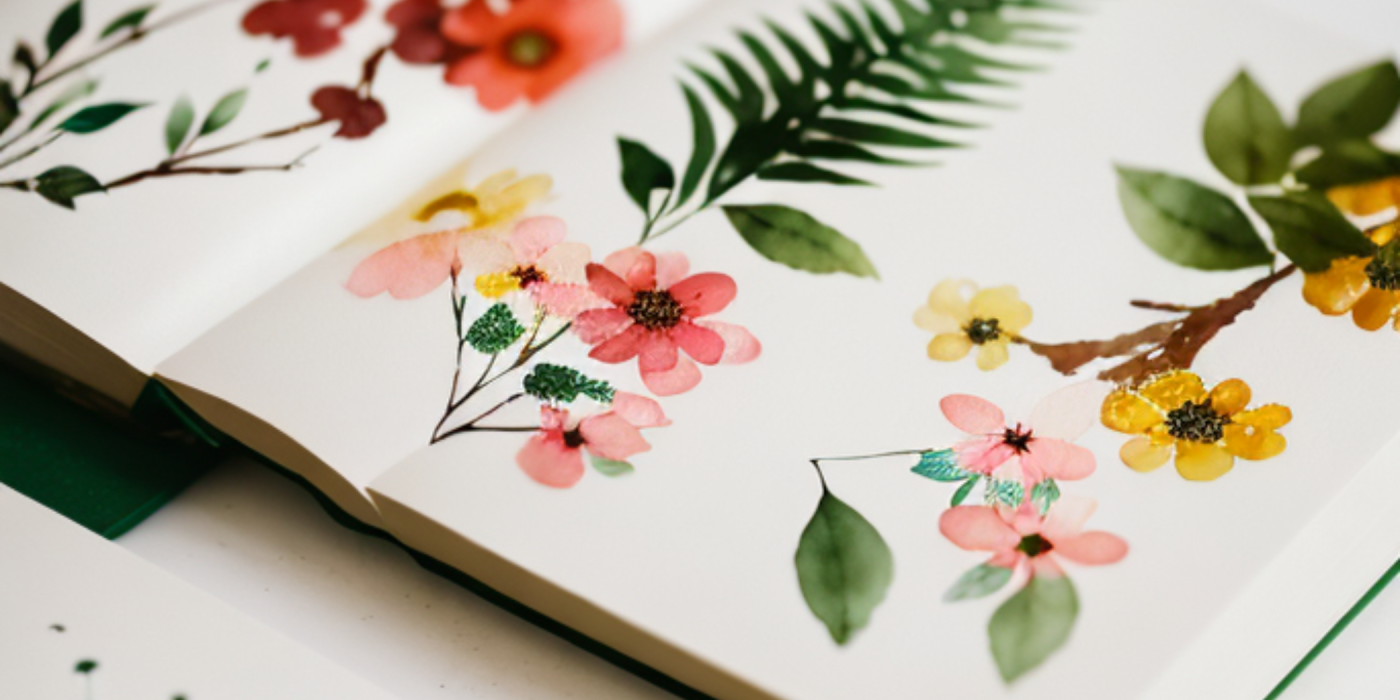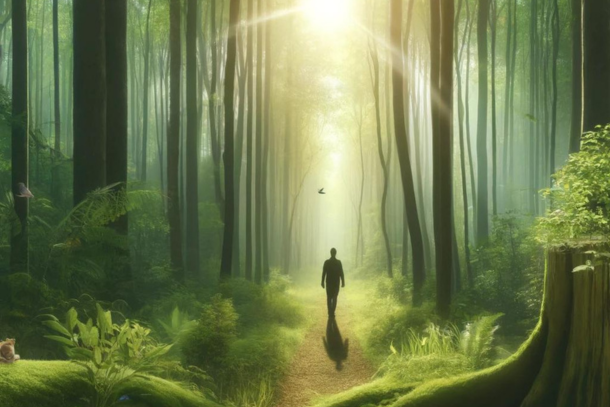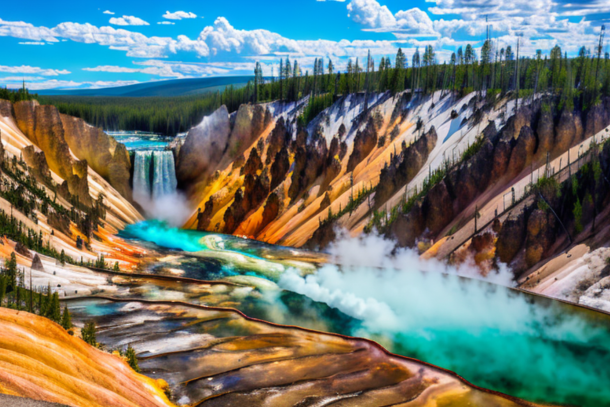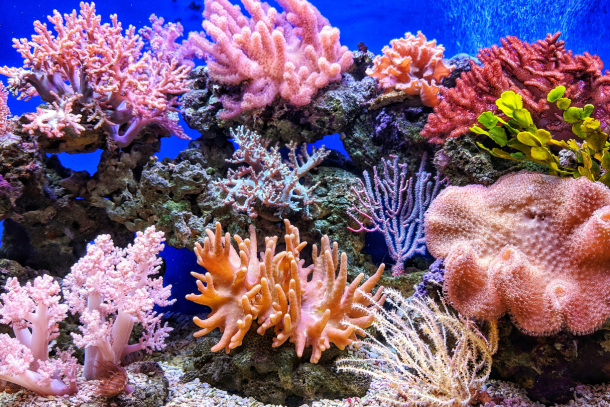Nature Drawing: A Mindful Way to Connect with the World Around You

Nature drawing, as the name suggests, is the art of sketching or painting the world around us as we see it. This practice, often pursued outdoors, involves capturing the beauty and intricacies of our environment onto paper. It's about translating the forms, colours, and textures we observe in nature into our unique artistic language. However, the significance of nature drawing extends far beyond the art itself. It is a form of interaction, a conversation if you will, between the artist and the world around them.
Nature Drawing as a Bridge to Mindfulness and Connection
In our ever-connected, fast-paced world, it can be challenging to find moments of stillness and truly connect with our environment. This is where the role of nature drawing in promoting mindfulness and fostering a deeper connection with the natural world comes to the fore.
Drawing nature isn't merely about creating a visually appealing piece of art. It's an act of mindful observation, a journey into the present moment where the artist becomes deeply engrossed in their environment. Every line drawn, every shade filled, requires a level of attention that gently nudges us away from our routine worries and distractions. It is this very act of focused observation that transforms nature drawing into a meditative process.
Furthermore, this practice allows us to appreciate the beauty and diversity of our natural world more profoundly. The curve of a leaf, the patterns on a butterfly's wing, the way sunlight filters through tree branches - all these minute details, often overlooked, become sources of awe and inspiration. In essence, nature drawing fosters mindfulness encourages a deeper connection with our surroundings, and invites a sense of wonder into our lives.
The Therapeutic Power of Nature Drawing
Psychological Benefits of Nature Drawing
The beauty of nature drawing lies not just in the creation of aesthetically pleasing art but also in the psychological benefits it brings. For many, this practice can become a form of meditation, with each stroke of the pencil serving to ground us in the present moment.
Firstly, nature drawing has been shown to reduce stress and anxiety. It diverts the mind from overbearing thoughts and worries, leading instead to a tranquil state of mind. Drawing the complexities of nature, such as the intricate details of a leaf or the multitude of shades in a sunset, encourages you to slow down, breathe, and reconnect with the calm and balance that nature provides.
Additionally, nature drawing improves focus and concentration. As your hand follows the lines of your subject, your mind is led away from distractions, fostering a deep state of focus and absorption in the task at hand.
Finally, the practice enhances creativity. By observing and recreating nature's countless colours, shapes, and textures, you train your mind to see beyond the ordinary, sparking creative thinking and problem-solving skills.
'Flow' in Art and Its Impact on Well-being
This deep state of concentration and absorption is often referred to as being in 'flow'. Coined by psychologist Mihaly Csikszentmihalyi, the concept of flow describes a mental state in which a person is fully immersed in an activity, resulting in a sense of energy, enjoyment, and fulfilment.
The act of drawing nature can easily lead you into this flow state, with your mind and body working in harmony as you engage with the natural world. The result is not only a beautiful piece of art but also a sense of satisfaction and well-being, underlining the immense therapeutic power of nature drawing.
Tools for Nature Drawing: A Guide to Get You Started
Choosing Your Drawing Tools
Having the right tools is essential for creating art, and nature drawing is no exception. The first thing you need is a good-quality sketchbook. Opt for one with thicker paper that can handle various mediums, whether it's pencil, ink, or even watercolour. It's worth considering a sketchbook with a spiral binding for ease of use when you're drawing in the field.
Next, you'll need a selection of pencils. For beginners, a standard set of graphite pencils will do. These typically range from softer, darker leads (such as 6B) to harder, lighter leads (like 4H). Having a range allows you to experiment with different lines, shading, and textures.
Adding Colour to Your Creations
For those keen on adding colour to their drawings, coloured pencils are an excellent choice. They offer precision and a range of hues to capture the vibrancy of nature accurately. Choose a set with a broad spectrum of colours and ensure they're of good quality to get the best results.
For a more fluid and flexible medium, watercolour paints are a fantastic option. They can provide your nature drawings with a lovely, dreamy quality and blend beautifully on the page. It might take some practice to master, but the effect can be truly mesmerising.
Tools Tailored to Your Style
The tools you choose should be reflective of your personal style and comfort. Experiment with different mediums and find out which one resonates with you. Remember, the goal of nature drawing is not only to create beautiful art but also to foster a deeper connection with the natural world. So, choose tools that will enhance this experience and make your drawing journey enjoyable.
Techniques for Nature Drawing
Mastering the Basics
Nature drawing, as an artistic discipline, requires a foundational understanding of a few key techniques. The first, and perhaps most important, is observation. Nature offers an incredible variety of textures, shapes, and colours, all waiting to be captured on paper. Take your time to observe the details - the way light falls on a leaf, the delicate veining of a petal, or the intricate pattern on a butterfly's wings.
Once you've observed your subject, the process of sketching comes into play. Start with a light outline, capturing the main shapes before gradually refining the drawing. There's no need for perfection - let the lines flow freely and enjoy the process.
Shading is another crucial technique in nature drawing. It helps in adding depth and volume to your drawings, transforming them from flat, two-dimensional sketches to realistic portrayals. Try different shading techniques like hatching, cross-hatching, or stippling to create different textures and depths.
Detailing is the final step, where you add the minute features that give your subject its unique character. It might be the intricate patterns on a butterfly, the veins on a leaf, or the soft fur of a squirrel.
Drawing Specific Natural Elements
Each natural element poses its own set of challenges and rewards. Trees, with their gnarled bark and canopy of leaves, require a balance between detailed textures and the play of light and shadow. Flowers, on the other hand, demand careful attention to the delicate curvature of petals and the vibrant interplay of colours. When drawing animals, capturing the emotion in their eyes and the texture of their fur or scales adds life to your art. Landscapes require a wider perspective, an understanding of perspective, and the ability to capture different elements of nature in harmony.
Remember, nature drawing is a journey of observation and expression. Take your time, practice, and, most importantly, enjoy the process.
Integrating Mindfulness into Nature Drawing
Mindfulness and Its Role in Nature Drawing
At its core, mindfulness is about being present and fully engaged with whatever we are doing at the moment, free from distractions or judgement, and with a soft and open mind. When integrated into the process of nature drawing, mindfulness transforms the practice into an immersive experience that can bring calm, focus, and a profound connection with the world around us.
Nature drawing, inherently, requires observation and focus - from the broad strokes that capture the overall form to the minute details that add life and texture. By drawing with mindfulness, we not only enhance our observational skills but also develop a deeper appreciation for the intricate beauty of nature. Each line we draw becomes an acknowledgement of nature's complexity and a celebration of its quiet, enduring presence.
Practical Exercises for Combining Mindfulness with Drawing
Observation exercise: Start your drawing session with a moment of observation. Sit quietly and observe your surroundings, taking in the colours, shapes, and movements. This prepares your mind for the task ahead and anchors you in the present moment.
Breath and draw: Pay attention to your breath as you draw. Allow your breathing to guide the rhythm of your strokes - inhale as you observe, exhale as you draw. This practice helps keep you anchored in the present and adds a meditative quality to your drawing process.
Draw with gratitude: As you wrap up your drawing session, take a moment to express gratitude. It could be for the natural subject you drew, the peaceful drawing experience, or the growth you’re experiencing as an artist. This practice helps cultivate positivity and a deeper connection with nature.
In conclusion, by infusing mindfulness into your nature drawing practice, you can transform it into a meditative process that not only improves your artistic skills but also nourishes your mind and soul.
Building a Regular Nature Drawing Practice
Cultivating a Drawing Routine
Incorporating a regular drawing routine into your schedule is a wonderful way to consistently engage with nature and nurture your artistic skills. Start by designating a specific time for your drawing sessions. Early mornings or late afternoons often provide the best light and tend to be quieter periods, lending themselves well to introspective activities like drawing.
Set realistic goals based on your daily life. It could be an hour of drawing every day or even just a few minutes of quick sketching. The key is consistency, not duration. As with any new habit, starting small and gradually increasing your drawing time can help make the practice stick.
Discovering Inspiration in Nature, Anywhere
When it comes to nature drawing, the world around you is your canvas. Even if you live in a bustling city, there are elements of nature that you can find and draw. A potted plant on your windowsill, a tree in a nearby park, or even the sky can serve as excellent subjects.
Take advantage of seasonal changes in your location. Each season brings with it a unique palette and variety of elements to draw - blossoms in spring, lush landscapes in summer, vibrant leaves in autumn, or bare branches against winter skies.
Remember, it's not about capturing a perfect likeness but about observing nature closely and expressing your perception of it through your art. Don't limit yourself to what you can see - consider the sounds, smells, and textures around you, and let them inform your work.
In conclusion, building a regular nature drawing practice is not only a route to improving your artistic abilities but also a path to mindfulness and a deeper connection with the world around you. So, grab your sketchbook, step outside, and let nature inspire you.
The Transformative Power of Nature Drawing
As we conclude our journey through the mindful world of nature drawing, let's take a moment to appreciate its transformative power. Nature drawing is more than a simple act of replication; it is an intimate dialogue between the artist and the natural world. It helps foster a sense of connection and reverence towards nature that few other activities can match.
Through the act of observing and capturing the nuances of our surroundings, we step into a space of mindfulness, consciously engaging with the present moment. Each stroke of the pencil or sweep of the paintbrush is an act of acknowledgement, a silent tribute to the beauty and complexity of our natural world. This interaction transcends the realm of aesthetics, offering a profound meditative experience that soothes our minds, enriches our perspectives, and nurtures our souls.
Embarking on Your Journey of Self-Discovery and Mindfulness
With this in mind, we encourage you, our readers, to pick up your pencils and brushes and embark on your own journey of self-discovery and mindfulness through nature drawing. Remember, this journey is not about attaining perfection but about embracing the process. It is about observing, appreciating, and capturing the essence of the world around us in our unique way.
So venture outdoors, or even peek through your window, and let the world be your canvas. With every leaf you sketch or sunset you capture, you'll find yourself growing more attuned to the rhythms of nature, more mindful of your existence.
In the end, nature drawing is not just about creating art; it's about experiencing life in its most vibrant form. It's an open invitation to connect, appreciate, and grow. So why wait? Grab your tools and let nature guide your hand.
Related to this article are the following:
I do hope you have enjoyed this article and hope that you will subscribe to my newsletter so you can get the latest information about all things naturally relaxing.
Stay in touch, join the Naturally Relaxing Newsletter
Newsletter Signup
Post Your Comments
or post as a guest
Be the first to comment.
Latest articles in Nature

Exploring the UK’s Most Serene Coastal Trails

The Healing Power of Nature: Forest Bathing Explained

Sustainable Gardening: Tips for Growing Your Own Herbs

The Yellowstone Supervolcano: A Sleeping Giant

The Lost City of Atlantis: A Geological Mystery






